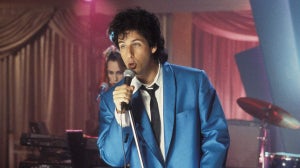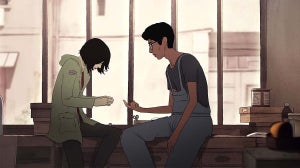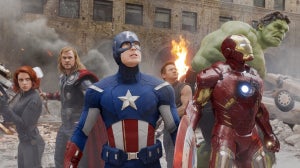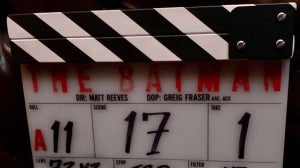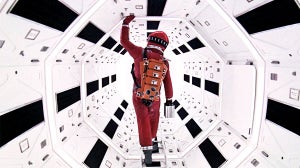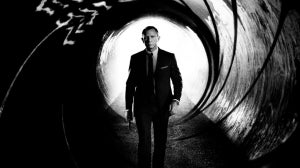
After working on production for blockbusters Star Wars: The Return of The Jedi and Indiana Jones andThe Temple of Doom, the mid-eighties saw a young David Fincher making a name for himself by directing an anti-smoking advertisement for the American Cancer Society. An unlikely medium for recognition, this advert allowed Fincher to get himself on the map and become a big name in TV spot advertising.
David Fincher’s film career took off soon after, and has taken him to many different genres and styles in the cine-sphere. Throughout the last 12 years of his full length feature directing career, a unique style has been shaped, one that has taken years to form and set, and will continue to evolve and develop over time. From the dark depths of Fight Club‘s blood-stained warehouses, to the enigmatic, icy lighting of The Girl With The Dragon Tattoo, Fincher knows how to let the atmosphere in a film hang and take hold on the narrative. His world in Fight Club is almost a pastiche of modern life; so real and tangible yet so far removed from the ordinary. In Seven he takes us into an apartment of a young couple, situated right under a train line, such realism exists within this home, but outside, cloaked in constant heavy rain, we get the idea that Fincher’s world is hiding something other-worldly, alien almost.
Seven: the world gets a feel for Fincher’s dystopian framework
https://www.youtube.com/watch?v=znmZoVkCjpI
As William Somerset (Morgan Freeman) and David Mills (Brad Pitt) are thrown together to investigate a murder case, the seemingly eternal downpour of thick rain follows them round their fictitious city, as they struggle against their very contrasting methods of approach.
What follows is a cat-and-mouse game of pursuit, and the two detectives continue to quarrel and argue as the mystery mass-murder unravels. With Kevin Spacey playing a villain we love to hate, Seven is corrupt, hellish and serpentine; unapologetically gripping throughout. Fincher’s use of dark shots and his exaggeration of the height of the decaying buildings lends a dystopian feel to the whole appearance of the film, a trademark technique he would later use to give Stockholm its dark, dream-like feel in The Girl With The Dragon Tattoo.
Fight Club: ultra-masculinity in a tame, corporate world

In 1999, David Fincher made a prominent mark on the film world by visualising Chuck Palahniuk’s rebellious underworld novel, Fight Club.
Fincher’s version painted an image of the world on the edge of a millennium, with any primal existence long overwritten by mass consumerism, office jobs and IKEA furniture. Fight Club touches on the unmentioned problem of emasculation in the modern world, and the restrictions on the expression of physicality and violence as an outlet.
The ‘Narrator’, known sometimes as Jack (Edward Norton), enters a world of violence and urban terrorism as a means of escapism after becoming increasingly alienated by his meaningless nine-to-five and addiction to buying consumer goods. We are shown a dark city, not unlike the one in Seven, where every man is an island and any Dionysian expression of debauchery is muted by shirts, ties and eyes to the ground.
The fight scenes are unusually brutal and real for a a Hollywood film, and form a key part of Fight Club’s shock value. A key scene sees Angel Face (Jared Leto) beaten to what can only be described as a wet pulp on the floor of an empty car park.
But Fight Club is so much more than a film with violence and fighting in it, it is a comment on society for a generation, a field-day for Nietzsche readers and a visual feast. The subtle industrial-dub soundtrack, created by The Dust Brothers, also works brilliantly against the dismal backdrop of the film.
The Girl with the Dragon Tattoo: Shooting an icy thriller the Fincher way
https://www.youtube.com/watch?v=DqQe3OrsMKI
Another novel adaptation, Fincher’s 2011 production of The Girl With The Dragon Tattoo is an isolated, Scandinavian tale in which characters are constantly searching and looking for connections. The opening sequence, which includes abstract, exaggerated visuals depicting different aspects of the film, is reminiscent of Fight Club’s intro sequence. A detective plot line, sees Mikael Blomkvist (Daniel Craig) set out with the intent of cracking a missing person case that goes back decades through a wealthy family, moving to a remote house on the family estate, Blomkvist sets out to piece together the situation.
Accompanied by Lisbeth Salander (Rooney Mara), a gothic, spiky-haired computer hacker with a dark past, Blomkvist soon finds that he’s in deeper than he first thought. Again, just like Fight Club, this film features an eerie soundtrack by Trent Reznor, which perfectly accompanies the cold, nordic colours of the film. We can now see a Fincher trademark and a pattern beginning to appear.
Recent and current projects include directing a couple of episodes of the critically-acclaimed series House of Cards, and Gone Girl, which is now in post-production.
With Fincher, you always get the feeling that something distinctly surreal hangs in the air. This may be due to the dream-like scores, the full-spectrum hues or the determined, focussed and sometimes neurotic characters that fill the spaces; either way, it makes for a unique viewing experience that well and truly has Fincher’s stamp on it.
Featured Image Source: Rex Images



